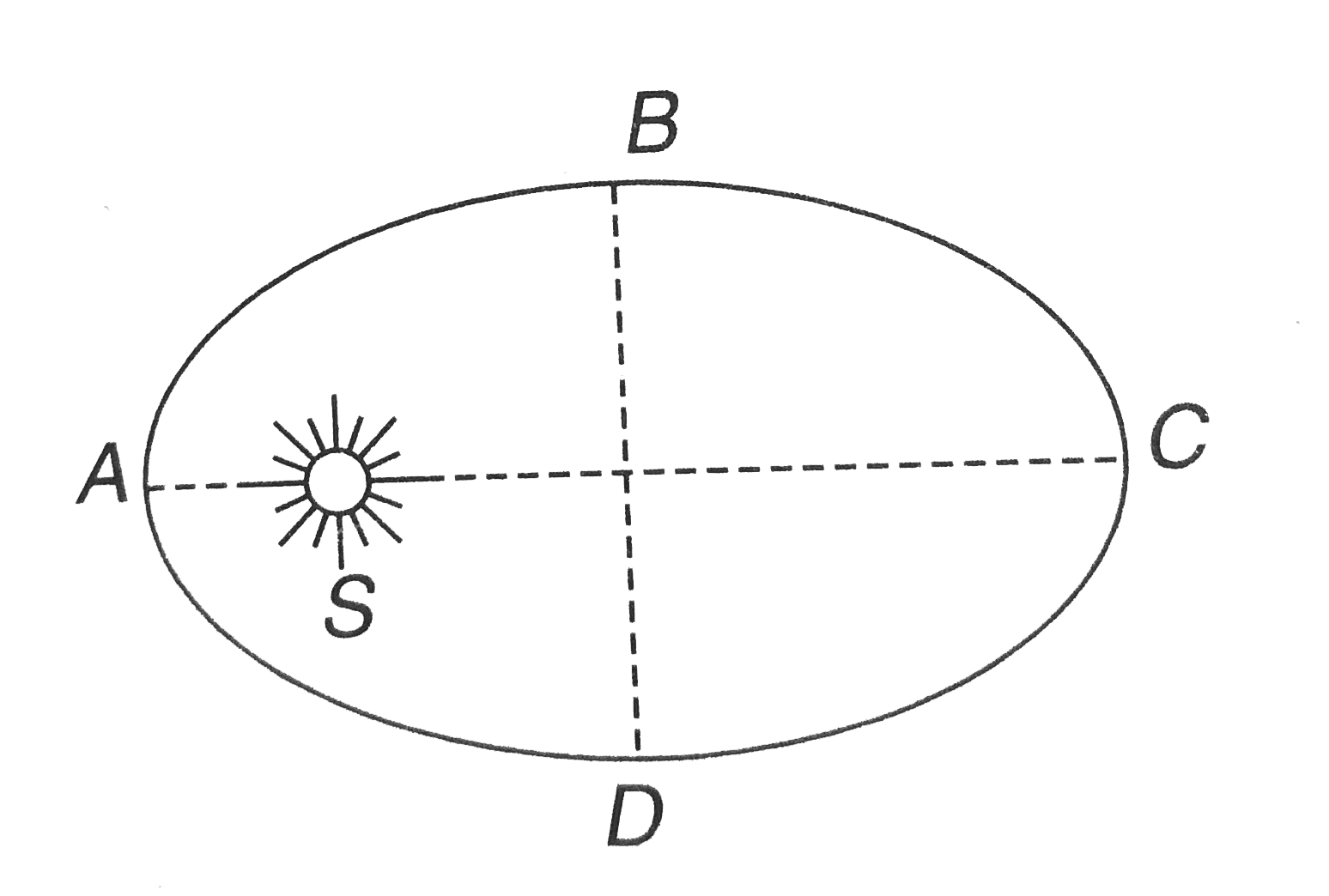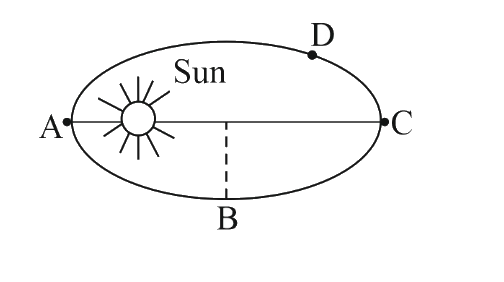For a planet revolving around sun, if a and b are the respective semi-major and semi-minor axes, then the square of its time period is proportional to
(a+b2)3
(a−b2)3
b3
a3
The correct Answer is:D
To solve the question, we need to apply Kepler's Third Law of planetary motion, which relates the time period of a planet's orbit to the semi-major axis of its elliptical orbit.
1. Understanding Kepler's Third Law:
Kepler's Third Law states that the square of the time period (T) of a planet is proportional to the cube of the semi-major axis (a) of its orbit. Mathematically, this can be expressed as:
T2∝a3
where T is the time period and a is the semi-major axis.
2. Identifying the Semi-Major and Semi-Minor Axes:
In the context of the question, we are given two axes: a (the semi-major axis) and b (the semi-minor axis). According to Kepler's law, only the semi-major axis is relevant for determining the time period.
3. Applying the Law:
Since a is the semi-major axis, we can directly apply Kepler's Third Law:
T2∝a3
This means that the square of the time period is proportional to the cube of the semi-major axis.
4. Conclusion:
Therefore, the square of the time period T2 is proportional to a3.
Final Answer:
The square of the time period is proportional to a3.
---
Kepler's Third Law states that the square of the time period (T) of a planet is proportional to the cube of the semi-major axis (a) of its orbit. Mathematically, this can be expressed as:
T2∝a3
where T is the time period and a is the semi-major axis.
In the context of the question, we are given two axes: a (the semi-major axis) and b (the semi-minor axis). According to Kepler's law, only the semi-major axis is relevant for determining the time period.
Since a is the semi-major axis, we can directly apply Kepler's Third Law:
T2∝a3
This means that the square of the time period is proportional to the cube of the semi-major axis.
Therefore, the square of the time period T2 is proportional to a3.
The square of the time period is proportional to a3.
Topper's Solved these Questions
- GRAVITATIONBOOK - DC PANDEY ENGLISHCHAPTER - GRAVITATIONEXERCISE - Level 1 Subjective
19 Videos
- GRAVITATIONBOOK - DC PANDEY ENGLISHCHAPTER - GRAVITATIONEXERCISE - Level 2 Single Correct
22 Videos
- GRAVITATIONBOOK - DC PANDEY ENGLISHCHAPTER - GRAVITATIONEXERCISE - Level 1 Assertion And Reason
11 Videos
- GENERAL PHYSICSBOOK - DC PANDEY ENGLISHCHAPTER - GENERAL PHYSICSEXERCISE - INTEGER_TYPE
2 Videos
- KINEMATICSBOOK - DC PANDEY ENGLISHCHAPTER - KINEMATICSEXERCISE - INTEGER_TYPE
10 Videos
Similar Questions
A small planet is revolving around a massive star in a circular orbit of radius R with a period of revolution T. If the gravitational force between the planet and the star were proportional to R−5/2, then T would be proportional to
View SolutionThe foci of an ellipse are located at the points (2,4) and (2,−2). The point (4,2) lies on the ellipse. If a and b represent the lengths of the semi-major and semi-minor axes respectively, then the value of (ab)2 is equal to :
View SolutionFor a planet revolving around Sun in an elliptical orbit, to obtain its velocity at any point we have to apply
View SolutionA planet is revolving around the sun as shown in elliptical path. The correct option is

View SolutionA particle is revolving in a circle of radius R. If the force acting on it is inversely proportional to R, then the time period is proportional to
View SolutionFor an ellipse having major and minor axis along x and y axes respectivley, the product of semi major and semi minor axis is 20. Then maximum value of product of abscissa and ordinate of any point on the ellipse is greater than (A) 5 (B) 8 (C) 10 (D) 15
View SolutionThe minimum and maximum distances of a planet revolving around sun are r and R . If the minimum speed of planet of its trajectory is v0 , its maximum speed will be
View SolutionThe relationship between, the semi-major axis, seimi-minor axis and the distance of the focus from the centre of the ellipse is
View SolutionKepler's law starts that square of the time period of any planet moving around the sun in an elliptical orbit of semi-major axis (R) is directly proportional to
View SolutionA planet revolves around the sun in an elliptical . The linear speed of the planet will be maximum at

View Solution
